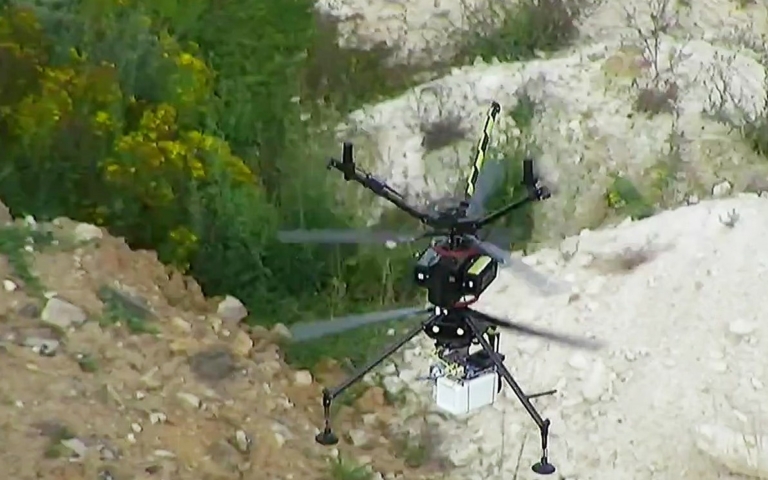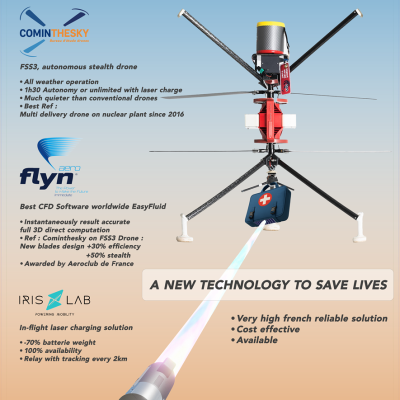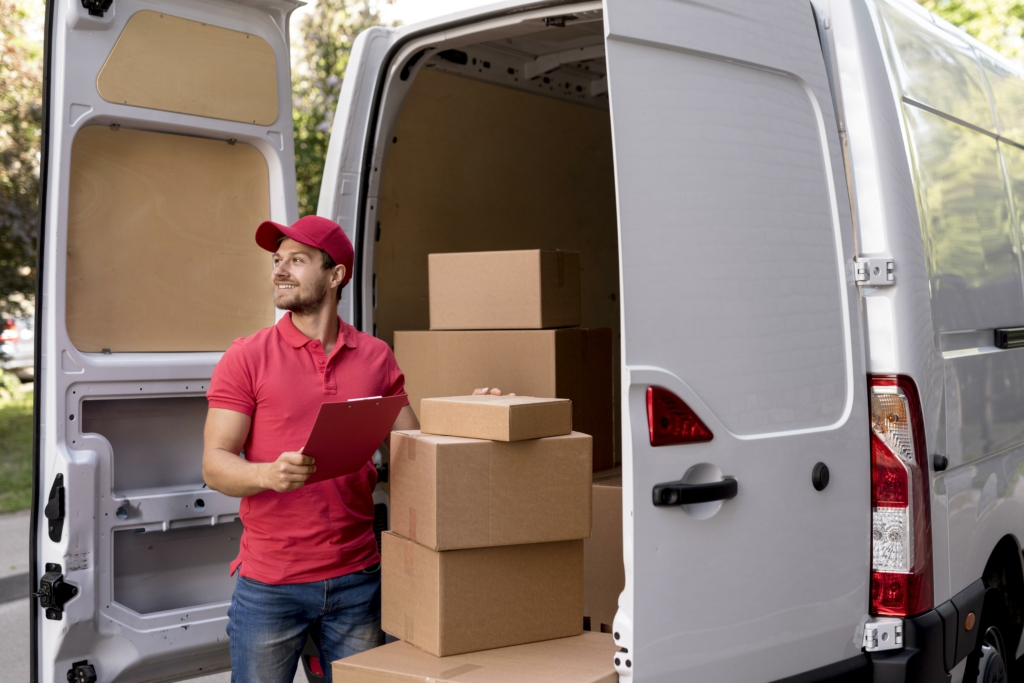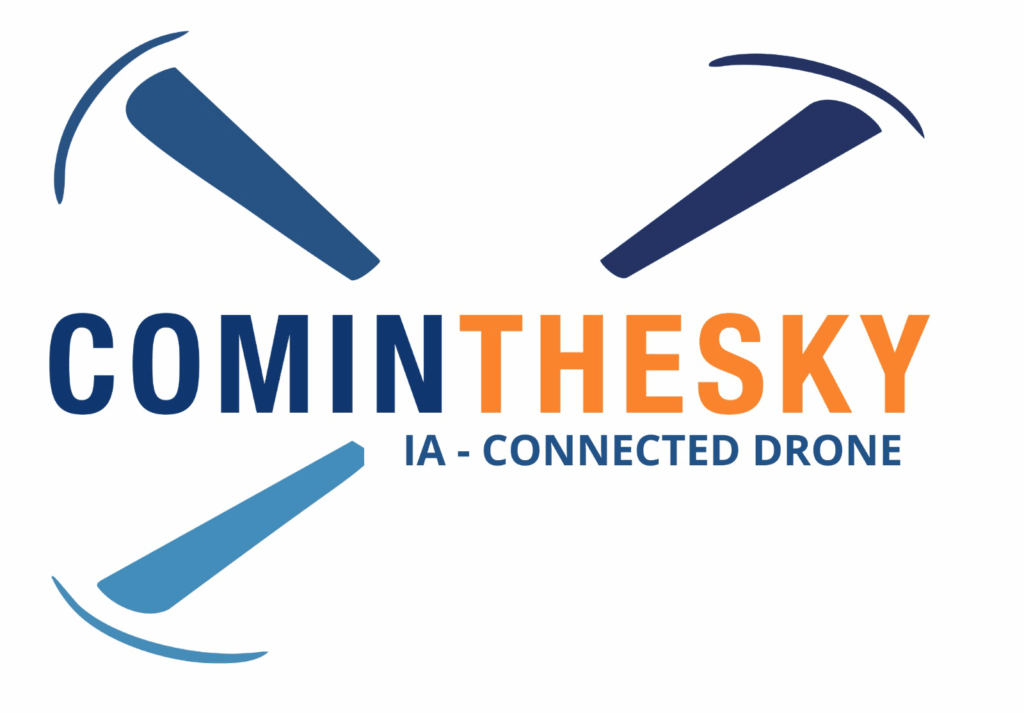Following the serious incident at Fukushima, French nuclear safety authorities required nuclear power plants to enhance crisis preparedness, particularly for those located in potentially vulnerable areas. In 2014, a call for tenders was launched. This allowed our team to create a new version of the Flying Sensor, a counter-rotating drone on a single axis. This variant was adapted to be autonomous and capable of performing, among other things, four deliveries per flight,fully automated and without a pilot. This innovative system was delivered in 2016, along with an annual maintenance contract that’s still valid today. Thus, for the first time in the world, an autonomous rotary-wing drone was operational for drone-based photographic delivery.
But today, which industries are truly ready for drone delivery technology? Discover the expanding market opportunities below.

The Autonomous Delivery Drone: A Future Solution for "Last-Mile" Logistics
Large-scale delivery networks won’t be immediately replaced by drone technology overnight, as the challenges remain significant in terms of cost and complexity. However, the drone is the ideal solution for a specific segment of logistics known as the “last mile”, that is, the final 5, 10, or even 50 kilometers of a delivery. This stage is often the most fragmented, slowest, and most expensive part of the process. The use of an autonomous drone then becomes a truly effective, faster, more eco-friendly, and cheaper alternative.
Autonomous Drone for Medical Delivery: A Priority
In medical emergencies, every minute matters. Transport time for certain medications, organs, or analyses is crucial and can save lives. Today, many hospitals, medical analysis laboratories, research laboratories, and other health centers often need to exchange health materials under extreme time constraints. Traditional road transport is increasingly unreliable due to traffic congestion, a problem autonomous drones simply bypass. A drone can cut delivery times in half or even by two-thirds compared to standard methods, while also offering a significantly lower long-term operational cost. As an extension of the healthcare network, the drone thus becomes a vector of responsiveness, safety, and equitable access to care, wherever urgency or distance pose a problem. The benefit-risk ratio is therefore largely advantageous, allowing for the progressive legalization of this type of delivery. Authorities have understood this, which is why several tests have already begun to experiment with this technology and are proving very encouraging for the future.

Drone Delivery for Remote or Disaster-Stricken Areas
In hard-to-reach locations , such as mountainous regions, islands, or disaster zones, delivering supplies quickly and affordably is a real challenge. After a natural disaster, roads may be blocked or destroyed, leaving aerial access as the only viable solution. Traditional air support, like helicopters, is often expensive, slow to deploy, and high-risk.
Drones offer a solution here with no human exposure to danger. They can fly through obstacles like fires or mountains and accurately deliver critical payloads. Even when road infrastructure is inaccessible, drones can deliver essential supplies, survival kits, medicines, food, or emergency equipment. They can also collect information, photos, or other data to assist on-site rescuers. In a simpler context, they can deliver to isolated areas daily at a lower operational cost.
The Last-Mile Delivery Market Today
The “last mile” refers to the final delivery stage in the logistics journey between a production center and the end customer. Today, it represents the most expensive and complex segment. In fact, it can account for up to 50% of total delivery costs, due to its fragmentation and lack of economies of scale, and growing customer expectations for personalized and on-demand service.
According to McKinsey (2022), 70% of consumers expect fast and free delivery, and last-mile transport is responsible for 10% of urban CO₂ emissions (ADEME). These trends are driving a need for sustainable, scalable alternatives to traditional logistics models.
This context creates fertile ground for the emergence of new logistical solutions like autonomous drones. Faster, more eco-friendly and capable of bypassing traffic obstacles, drones are gradually establishing themselves as a game-changing innovation in last-mile logistics.

Ongoing Drone Delivery Experiments
The use of autonomous drones for last-mile delivery is no longer a futuristic concept. For several years, companies around the world have been actively working on this topic. Often, they’ve started controlled tests for specific uses, which clearly shows that the market is opening up and has real potential. In the United States, Amazon has been testing its Prime Air program for several years, delivering lightweight packages autonomously over short distances in semi-rural areas. In Ireland, the startup Manna has partnered with fast-food chains to provide meal delivery by drone, operating within neighborhoods. Across Africa, countries like Rwanda and Ghana have already implemented medical drone networks to serve remote hospitals, proving that these technologies can be functional even in complex environments.
There’s a clear demand, and the technology is almost ready. However, it remains tightly regulated in most regions and, in some cases, relies on government subsidies. Public authorities are increasingly granting exemptions, especially in Europe, to trial professional use of drones in sectors like healthcare and industry, a very encouraging signal for the future. Nevertheless, it was in France, and since 2016, that our team successfully deployed one of the world’s first fully operational autonomous drone delivery systems and what’s more, at a nuclear power plant.
Our Drone Delivery Solution: A World First Since 2016
Long before autonomous delivery drew the attention of major logistics players, our team designed and implemented a 100% operational autonomous drone delivery solution in one of the most demanding environments in the world: nuclear sites.
As early as 2016, we delivered to the Institut Laue Langevin (Grenoble) a custom-made version of our Flying Sensor 3. It was capable of multi-waypoint autonomous deliveries, even in heavy rain and wind gusts up to 70 km/h, with landing precision of under 1 meter. Silent, robust, modular and maintenance-friendly, the Flying Sensor 3 became a global first: a turnkey, versatile system that could not only deploy or collect materials on demand but also perform atmospheric sampling, all without human intervention in high-risk conditions.
Since then, we’ve continued to refine, test, and adapt the system for new applications, laying the groundwork for a reliable, fast, and adaptable drone delivery system for the logistical challenges of disaster-stricken areas, enclaved regions, and the last mile.
To learn more about this proven technology and its civilian applications, explore the rest of our page dedicated to autonomous drone delivery . Progress is constant; stay informed.
To learn more about this proven technology and its civilian applications, explore the rest of our dedicated Autonomous Drone Delivery page .
This field is evolving fast, so stay informed and follow the progress.

























